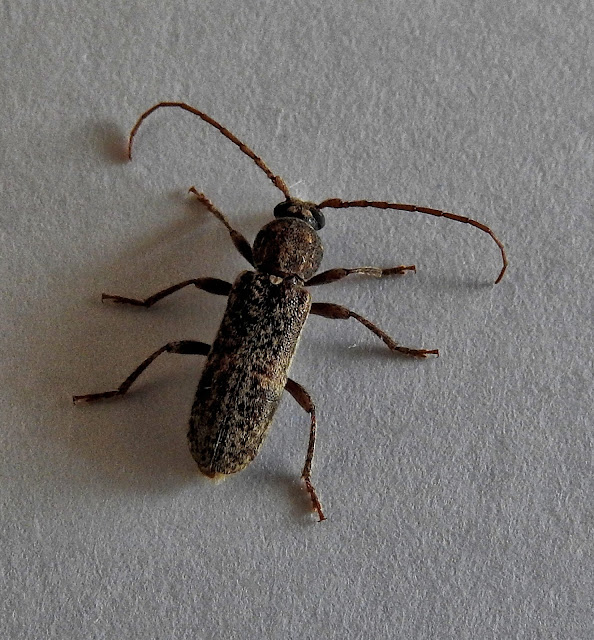These famous pink birds can be found in warm, watery regions on many continents. They favor environments like estuaries and saline or alkaline lakes. Considering their appearance, flamingos are surprisingly fluid swimmers, but really thrive on the extensive mud flats where they breed and feed.
Greater flamingos are likely to be the only tall, pink bird in any given locale. They also have long, lean, curved necks and black-tipped bills with a distinctive downward bend.
Their bent bills allow them to feed on small organisms—plankton, tiny fish, fly larvae, and the like. In muddy flats or shallow water, they use their long legs and webbed feet to stir up the bottom. They then bury their bills, or even their entire heads, and suck up both mud and water to access the tasty morsels within. A flamingo's beak has a filterlike structure to remove food from the water before the liquid is expelled.

Shrimplike crustaceans are responsible for the flamingo's pink color. The birds pale in captivity unless their diet is supplemented.
Greater flamingos live and feed in groups called flocks or colonies. They find safety in numbers, which helps to protect individual birds from predators while their heads are down in the mud. Greater flamingos also breed while gathered in groups. Once mating is complete, a pair takes turns incubating their single egg. Young flamingos are born gray and white and do not turn pink for two years. In years when wetlands and pools are dry and food scarce, flamingoes may not breed.
The greater flamingo, Phoenicopterus roseus, stands as the most widespread and largest member of the flamingo family. This majestic bird is adorned with pinkish-white plumage, save for the red wing coverts and contrasting black primary and secondary flight feathers. The bill is a striking pink with a black tip, and the legs are a uniform pink, completing the iconic look of this species.
Adult greater flamingos can be identified by their height, ranging from 110 to 150 cm, and their weight between 2 and 4 kg. The largest males can reach up to 187 cm tall and weigh 4.5 kg. Observers should note the distinctive coloration, with the majority of the body being pinkish-white, red wing coverts, and black flight feathers. The pink bill with a black tip and entirely pink legs are also key identification features. The call of the greater flamingo is reminiscent of a goose-like honking.
Greater flamingos favor mudflats and shallow coastal lagoons with saline water, where they can be seen stirring the mud with their feet in search of food.
This species is common in the Old World, with a range that includes Northern and Sub-Saharan Africa, the Indian Subcontinent, the Middle East, the Levant, and Southern Europe. Notably, they are found in coastal regions and along water bodies such as the Nile River, the Persian Gulf, the Gulf of Aden, the Red Sea, and the Mediterranean.
Greater flamingos are social birds, often found in large flocks. They feed with their heads down, filtering out sustenance from the water with their specially adapted bills. During the breeding season, these birds engage in a fascinating display of spreading uropygial secretions over their feathers to enhance their color, a behavior likened to applying "make-up."
The vocalization of the greater flamingo is a distinctive honking, similar to that of a goose, which can be heard over considerable distances.
The species lays a single chalky-white egg on a mud mound, a typical breeding behavior for flamingos.
While similar to the American flamingo, the greater flamingo can be distinguished by differences in head, neck, body, and bill coloration.
Greater flamingos feed on a diet that includes small shrimp, seeds, blue-green algae, microscopic organisms, and mollusks. They filter their food from the water with their downward-facing heads and movable upper jaws.
The IUCN Red List classifies the greater flamingo as Least Concern, indicating a stable population. However, they face threats from habitat encroachment and pollution in their water supplies.
In the voice of David Attenborough, one might say: "The greater flamingo, with its elegant stature and vibrant hues, is a testament to the wonders of the avian world. As it sifts through the shallows, one cannot help but be captivated by its grace and the delicate balance it maintains within its ecosystem."

Flamingos build a nest on the ground out of mud, small stones and feathers. It can take a pair up to 6 weeks to build (still quicker than your average house build)! In the nest, the female will lay a single white egg which the parents take turns incubating. Upon hatching, you would be forgiven in thinking the eggs have been swapped out, as the chicks are born grey! It can take up to a couple of years for them to become pink – how you ask? It is all in their diet. Their colouration comes from carotenoid pigments found in food. It is found naturally in a variety of plants and animals including algae and shrimps.

The long legs and partially webbed feet of a flamingo makes feed times particularly lively – these legs are perfectly adapted to wade into water, whilst stamping their feet on the muddy bottom, mixing up the food particles. They then hold their bill upside down in the water and swish their head from side to side. Inside their bill, it works a little like a sieve. Their huge tongue sucks in water from the front and pushes it out the sides of their bill. Broom-like plates trap and filter out tiny organisms such as shrimp and planktonic algae. Delicious!





































%2020.jpg)

%2021.jpg)









